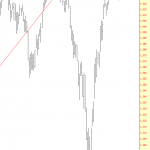Ethereum, the second leading cryptocurrency, has long been crypto enthusiasts’ darling in terms of the value it has been bringing to the industry. However, with time and growing interest, the coin’s network showed flaws, including huge overloads, high transaction fees and speed issues.
Cointelegraph talked to Marco Chen, co-founder of Parastate and member of Rust Foundation, about why Ethereum (ETH) compatible smart contracts are the new black for blockchain developers.
1. What’s the story behind ParaState?
We’ve asked ourselves numerous times before starting ParaSate, “Crypto space is a fast-changing world, but what changes might be brought in the long term to improve it?” The virtual machine infra seemed to be the obvious answer.
After almost six years of Ethereum ICO, EVM is still dominant in the current “on-chain virtual machine” market share, and almost 90% of apps are EVM applications. That’s why we decided to invest our limited resources in the track of a smart contract platform to upgrade the current EVM infrastructure.
2. What is compatibility and why do you think Ethereum needs it?
EWASM was a part of the ETH 2.0 roadmap back in 2019, and ParaState is building a next-gen on-chain OS for Ethereum compatible networks; in the meanwhile, we are backward compatible with all EVM applications.
3. Can you explain exactly your open-source business model?
When our EWASM runtime pallet extends to another layer one networks that want to achieve Ethereum compatibility with higher performance, we will charge a small percentage of the gas fee as a license fee. And these fees will be collected into a DAO treasury governed by the ParaState DAO. So the value of the ParaState DAO token is backed by a basket of native cryptocurrencies of the deployed blockchains.
4. Tell us about your Polkadot Substrate framework integration and why you needed it.
First of all, we chose to build on Polkadot (DOT) because Parity creates a really awesome framework, Substrate, a modular framework that enables you to create purpose-built blockchains by composing custom or pre-built components. With Substrate, building a chain becomes efficient and the core component pallet like a consensus, VM runtime could be easily changeable and plug-n-go.
More insights on ParaState here
So our EWASM runtime can be integrated into all other Substrate blockchains with limited development efforts for massive adoption. According to W3F official data, there are more than 300 projects under development to build their own Substrate blockchains. These projects can become our target partners.
5. What do you mean when you say “performance on steroids?”
It means our runtime infrastructure can execute smart contract transactions over 100 times faster than EVM.
6. Tell us about your biggest achievements so far.
We’ve been running our public testnet “Plato” since this April, with more than 120 validators supporting the network. Plato is the first Substrate blockchain that both features EVM & EWASM. Our EWASM runtime infra is not only production-ready in the Substrate ecosystem but also in the Oasis network and potentially in the ICON 2.0 network.
7. Future plans? Any other important integrations?
We are going to launch a universal runtime pallet for the Polkadot parachain ecosystem around Q3 2022. So all the parachains could easily take our pallet as their core runtime infra to achieve higher performance with Ethereum compatibility. And we plan to kick off our public offering event by the end of the year.
Learn more about Parastate
Disclaimer. Cointelegraph does not endorse any content or product on this page. While we aim at providing you with all important information that we could obtain, readers should do their own research before taking any actions related to the company and carry full responsibility for their decisions, nor can this article be considered as investment advice.








Leave A Comment